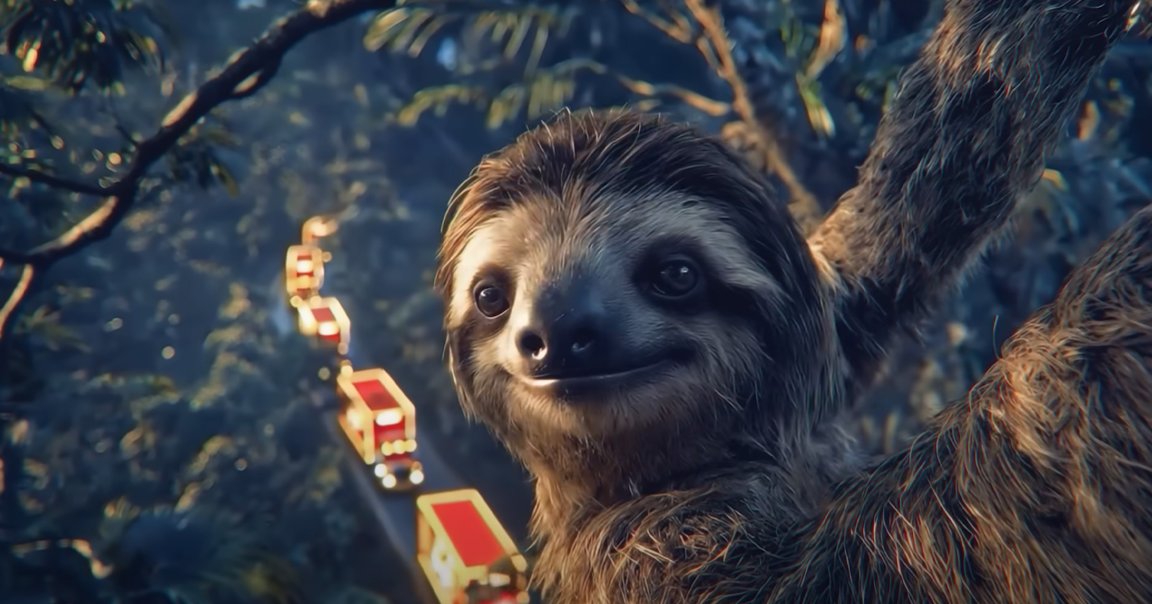
Coca-Cola is back with another series of AI-generated ads to herald the holidays — and they look just as bad as they did last year.
The new ad campaign, titled the “Holidays Are Coming,” is a callback to the company’s 1995 commercial of the same name, and was made in collaboration with the AI firm Silverside AI, according to the Wall Street Journal, which also helped with the company’s first AI holidays ad.
That initial foray at making a vague AI homage to the original classic was met with outrage and mockery last year. There was no shortage of dumb details to poke fun at, like the stiff and uncanny human faces, and the wheels on the Coke trucks that would randomly spin in different directions, if they were rotating at all.
This time the AI got the wheels to spin properly, but seemingly Coke didn’t trust the tech to render people anymore, since human faces are almost nowhere to be seen. Instead, the ad’s Thomas-Kincade-filter landscapes are populated by a collection of no less uncanny animals, ranging from polar bears to — and we have no idea why — sloths, an animal almost nobody associates with the winter holidays.
We do get one prominent depiction of a human face in the “Fantastical” version of the ad, reminding us of what we’re missing: a close up of Santa Claus’s grinning hyperrealistic mug, as well as his waving hand with fingers that briefly distort into impossible shapes. Afterwards, the slogan “Real Magic” appears on screen.
In sum, the ad is very recognizably the work of an AI model. Movement is strangely fluid, and at once weightless and suspended in half-slow motion. All the shots are just that, shots, with no cohesion between the images.

Coke shared a “behind the scenes” video of how its latest ad was made, which itself seems to be narrated by two AI voices. After bragging about wanting to go for “hyperrealism” — an extremely odd aesthetic choice for a piece that’s supposed to induce warm, cozy feelings — the company’s dueling bored-sounding podcast personas revealed that the ad team “churned out” more than 70,000 video clips to create a finished product, which sounds incredibly inefficient. The important part to Coke, though, was that it only took five “AI specialists” and a month to make. But in total, around 100 people were involved in the new commercial campaign, per the WSJ.
All that for what is still a crummy looking product. If a before and after of the 2024 and 2025 Coke AI ads are taken as a barometer of AI image generating tech’s progress, it’s not looking very promising.
Of course, maybe this is more of an embarrassing reflection on Coke’s AI efforts in isolation, since video generating AIs have seen major leaps this year with releases of models like OpenAI’s Sora 2 and Google’s Veo 3. On the other hand, these, too, may look bad once they’re placed into a scenario where they’re expected to produce full blown exhibitions of professional filmmaking instead of just the odd shot or two — even in an artform as commercial as, well, commercials.
Look at Google’s first AI-generated ad which debuted last week, made with its state of the art Veo 3 model: it only features several seconds of AI footage across several disconnected shots, and all in just the right cartoonish style to avoid scrutiny.
More on AI: Studio Ghibli Demands That OpenAI Stop Ripping Off Its Work